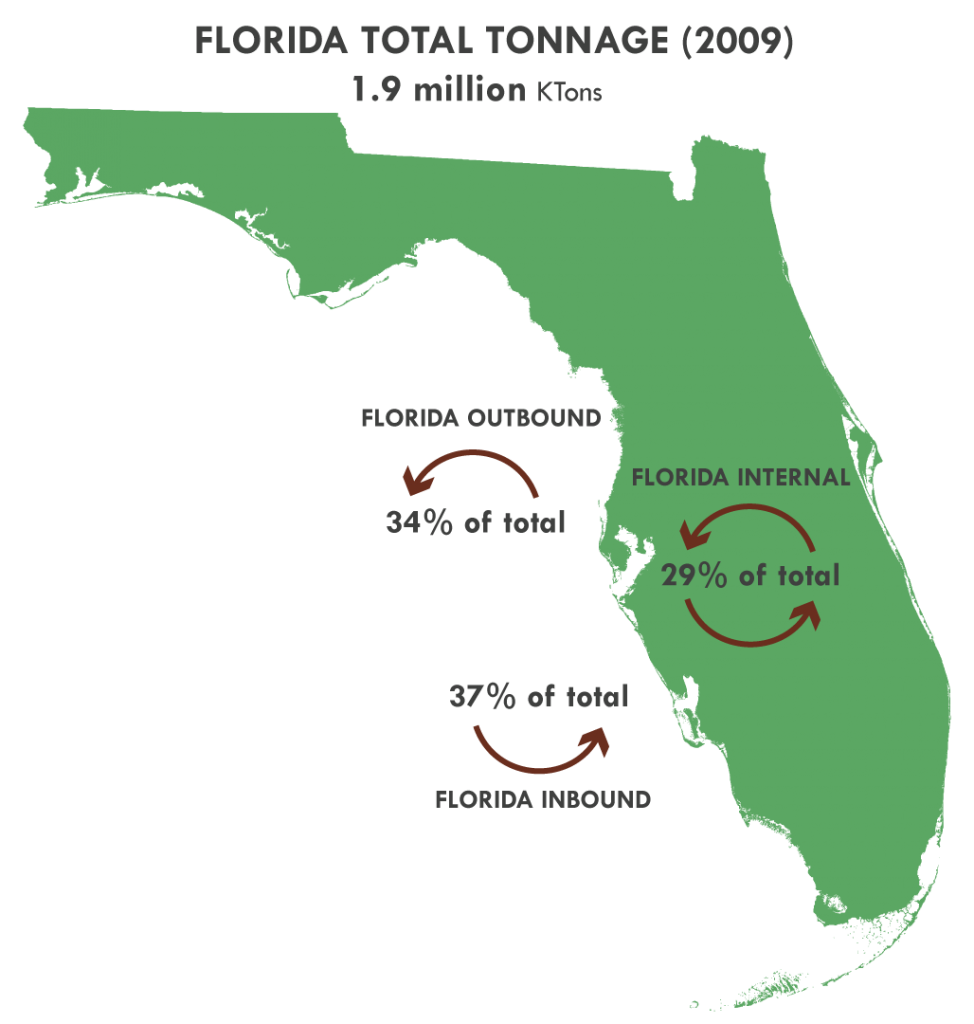Economic Value of Freight Mobility
The freight transportation system is a critical component of the regional economy. Efficient and safe freight mobility supports commercial and industrial growth, job creation, and a high quality of life. The freight transportation system encompasses the trucking industry, maritime shippers and supportive trades, air cargo providers, freight rail carriers, intermodal terminals, warehousing facilities and distribution centers.
Florida has the opportunity to emerge as an important trade hub linking the southeastern U.S. with trading partners to the south, west, and east. Within the State of Florida, the Tampa Bay region’s central location positions it to increase trading activity within Florida, nationally, and internationally. The expansion of the Panama Canal and the potential for national economic policies to increase trade between Latin America and the United States further emphasize Tampa Bay’s importance as an international distribution hub.
Investments in freight transportation improvements that reduce the cost of moving goods to and from markets increase and sustain economic growth. To capture a strong share of future economic opportunities, economic development plans, transportation plans, and local government comprehensive plans need to be mutually supportive. The efficient movement of goods throughout the region relies on the integration of freight infrastructure, equipment, personnel, and information systems. All of these components must work together in order to sustain the regional economy. Therefore, the movement of freight, as it relates to economic development, should be an important factor when developing annual priorities for transportation improvement programs.

